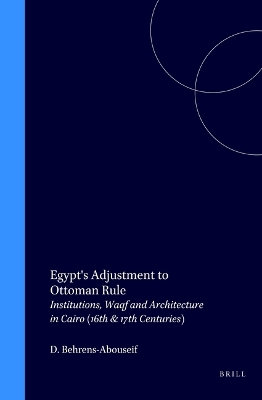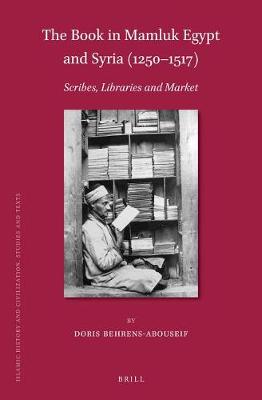Islamic History and Civilization
2 primary works
Book 7
Egypt's Adjustment to Ottoman Rule deals with the impact of the Ottoman conquest of Egypt on its political, religious and social institutions, their transition from the Mamluk to the Ottoman regime and further development up to the 17th century.
The relationship between the Ottoman ruling establishment, the local religious groups and the military aristocracy is discussed in the first part of the volume. Waqf documents are a major source for this study which, in the second part, analyzes and compares the endowments of the Ottoman governors and those of the military aristocracy and their respective impact on the urban development and architecture of Cairo in this period. The architecture is documented with 70 photographs and figures.
By integrating architecture and urbanism in the historical analysis of the period under study, this book is important for historians and art historians of Egypt.
The relationship between the Ottoman ruling establishment, the local religious groups and the military aristocracy is discussed in the first part of the volume. Waqf documents are a major source for this study which, in the second part, analyzes and compares the endowments of the Ottoman governors and those of the military aristocracy and their respective impact on the urban development and architecture of Cairo in this period. The architecture is documented with 70 photographs and figures.
By integrating architecture and urbanism in the historical analysis of the period under study, this book is important for historians and art historians of Egypt.
Book 162
This book is the first to date to be dedicated to the circulation of the book as a commodity in the Mamluk sultanate. It discusses the impact of princely patronage on the production of books, the formation and management of libraries in religious institutions, their size and their physical setting. It documents the significance of private collections and their interaction with institutional libraries and the role of charitable endowments (waqf ) in the life of libraries. The market as a venue of intellectual and commercial exchanges and a production centre is explored with references to prices and fees. The social and professional background of scribes and calligraphers occupies a major place in this study, which also documents the chain of master-calligraphers over the entire Mamluk period. For her study the author relies on biographical dictionaries, chronicles, waqf documents and manuscripts.

